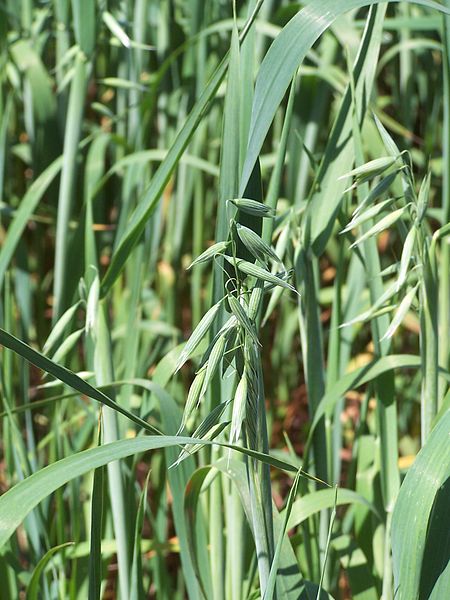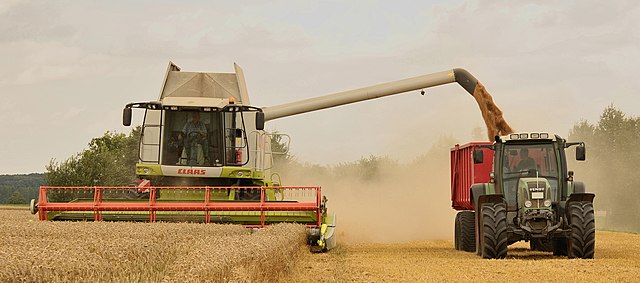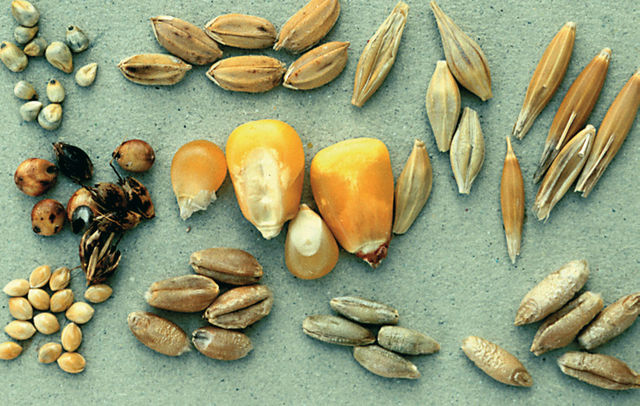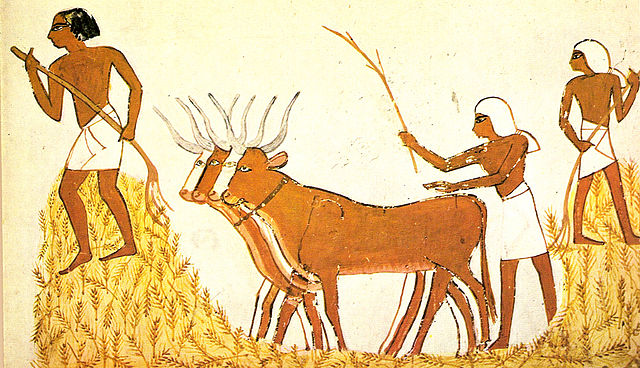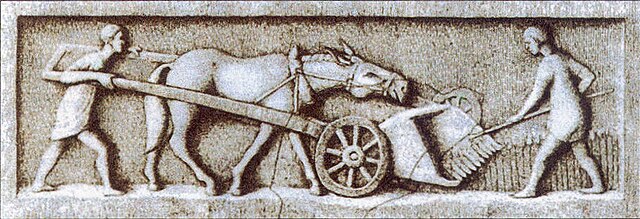The oat, sometimes called the common oat, is a species of cereal grain grown for its seed, which is known by the same name. Oats are used for human consumption as oatmeal, including as steel cut oats or rolled oats. They appear to have been domesticated as a secondary crop as their seeds resembled those of other cereals closely enough for them to be included by early cultivators. Oats are a nutrient-rich food associated with lower blood cholesterol and reduced risk of human heart disease when consumed regularly. One of the most common uses of oats is as livestock feed; the crop can also be grown as groundcover and ploughed in as a green manure.
Oat
Botanical illustration
Oat spikelets, containing the small wind-pollinated flowers
Panicle with spikelets containing seeds
A cereal is a grass cultivated for its edible grain. Cereals are the world's largest crops, and are therefore staple foods. They include rice, wheat, rye, oats, barley, millet, and maize. Edible grains from other plant families, such as buckwheat and quinoa are pseudocereals. Most cereals are annuals, producing one crop from each planting, though rice is sometimes grown as a perennial. Winter varieties are hardy enough to be planted in the autumn, becoming dormant in the winter, and harvested in spring or early summer; spring varieties are planted in spring and harvested in late summer. The term cereal is derived from the name of the Roman goddess of grain crops and fertility, Ceres.
Harvesting a cereal with a combine harvester accompanied by a tractor and trailer.
Cereal grains: (top) pearl millet, rice, barley (middle) sorghum, maize, oats (bottom) millet, wheat, rye, triticale
Threshing of grain in ancient Egypt
Roman harvesting machine

